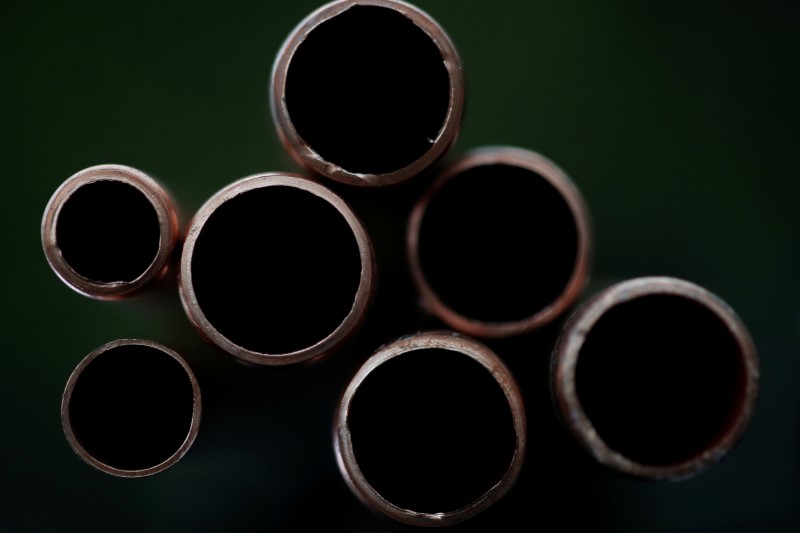Proactive Investors - Copper has gained a significant new status.
The metal has now been listed among the critical minerals in the United States – a list that determines materials essential to global clean energy technology supply chains. The recognition stems from its pivotal role in various sectors, including the automotive industry and renewable energy technologies.
In late July, the US Department of Energy (DOE) released the 2023 Critical Materials Assessment, which determined a list of energy-specific critical and near-critical materials through 2035. Established in 2018 through executive order and later formalized by the Energy Act of 2020, the US Critical Minerals List aims to address vulnerabilities in the supply chain of these minerals to stimulate engagement across the supply chain, from exploration to recycling and reprocessing. Over time, the list has become a convenient reference for crucial minerals, often invoked in legislative initiatives aimed at bolstering these minerals' prospects through measures like tax incentives, government procurement, and regulatory assistance.
But despite its evident significance and growing reliance on imports from potentially adversarial nations, copper was not included in the 2022 edition.
Alejandro Moreno, acting assistant secretary for DOE’s office of energy efficiency and renewable energy, said that it was the agency’s “responsibility” to anticipate critical material supply chains needed to manufacture clean energy generation, transmission, storage and end-use technologies.
“Ultimately, identifying and mitigating material criticality now will ensure that a clean energy future is possible for decades to come,” Moreno said in a statement.
The final list includes aluminum, cobalt, copper, dysprosium, electrical steel, fluorine, gallium, iridium, lithium, magnesium, natural graphite, neodymium, nickel, platinum, praseodymium, terbium, silicon, and silicon carbide.
Below are some areas taken from the 2023 Critical Minerals List highlighting the role that copper will play in key industries:
Driving the future of vehicles
Copper has become an essential element in the automotive industry due to its exceptional electrical and thermal conductivity. The metal's excellent properties make it a preferred choice for electronics and wiring in vehicles, contributing to improved functionality, efficiency, safety, and comfort. Its electrical conductivity ensures seamless communication and efficient operation of various systems within vehicles, enhancing the overall driving experience.
While aluminum is a competitor for electrical and thermal conduction applications, copper's advantages lie in its efficiency with less material needed for electrical purposes and improved heat transfer capabilities. Copper's prevalence in braking systems, electrical controls, gearboxes, heat exchangers, and vehicle electronics in both internal combustion engine (ICE (NYSE:ICE)) vehicles and electric vehicles (EVs) is evidence of its versatile utility.
Copper's role in electric vehicles and automation
As the automotive industry shifts toward electrification and automation, copper's importance escalates. Electric vehicles, in particular, rely heavily on copper for their batteries, traction motors, inverters, wiring systems, and power electronics. The adoption of autonomous vehicles also drives an increased demand for copper in components such as cameras, lidars, radars, and autonomous driving control units.
The shift toward larger vehicles, such as electric buses, further accentuates copper's significance. The amount of copper required in a battery electric bus can increase by a factor of eleven to sixteen compared to an ICE bus, illustrating copper's critical role in larger electric vehicles.
Powering renewable energy with copper
Copper's influence extends beyond the automotive industry, as it plays a vital role in renewable energy technologies. In wind turbines, copper is indispensable for ensuring proper functioning and efficiency. It is used in generators, grounding towers, and carrying electrical currents throughout the turbines. Copper's applications are crucial for both gearbox and direct-drive wind turbine types, enabling efficient energy conversion.
In onshore wind installations, copper usage is distributed among various components, including cables, transformers, switchgear, and power electronics. Offshore installations, which require longer cabling, demand even more copper due to the need for interconnecting turbines.
Proactive’s small cap copper stocks to watch:
- C3 Metals Inc (TSX-V:CCCM, OTC:CARCF)
- Copper X Mining Inc. (TSX-V:GYA)
- Fabled Copper Corp. (CSE:FABL)
- Kodiak Copper Corp. (TSX-V:KDK)
- Los Andes Copper Ltd (TSX-V:LA)
- Majuba Hill Copper Corp (CSE:JUBA)
- MTB Metals (TSX-V:MTB, OTCQB:MBYMF)
- Murchison Minerals Ltd (TSX-V:MUR, OTCQB:MURMF)
- Phoenix Copper Ltd (AIM:PXC, OTCQX:PXCLF)
- Torr Metals (TSX-V:TMET)
- TNR Gold Corp (TSX-V:TNR, OTC:TRRXF)
- Western Metallica Resources Corp. (TSX-V:WMS)
